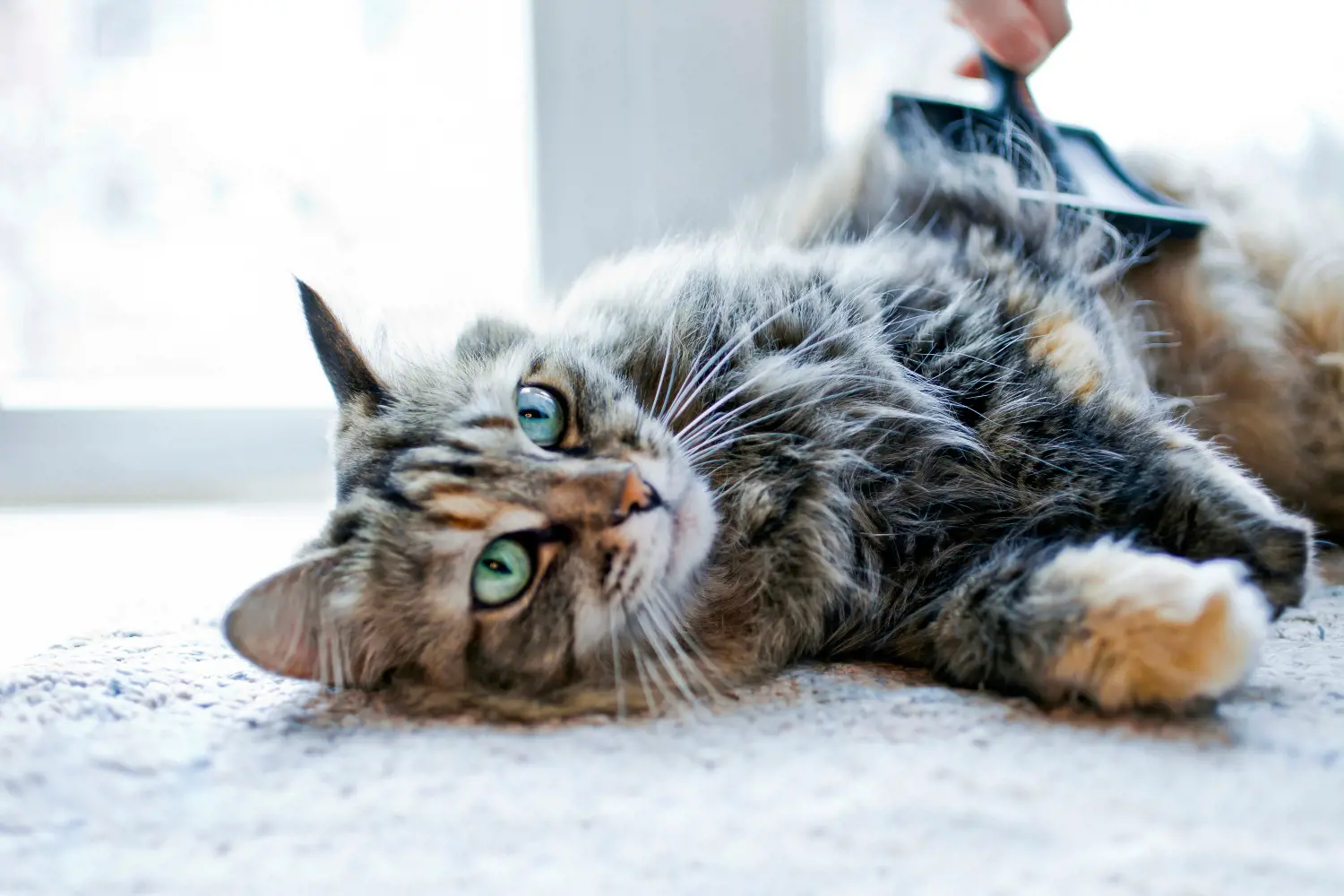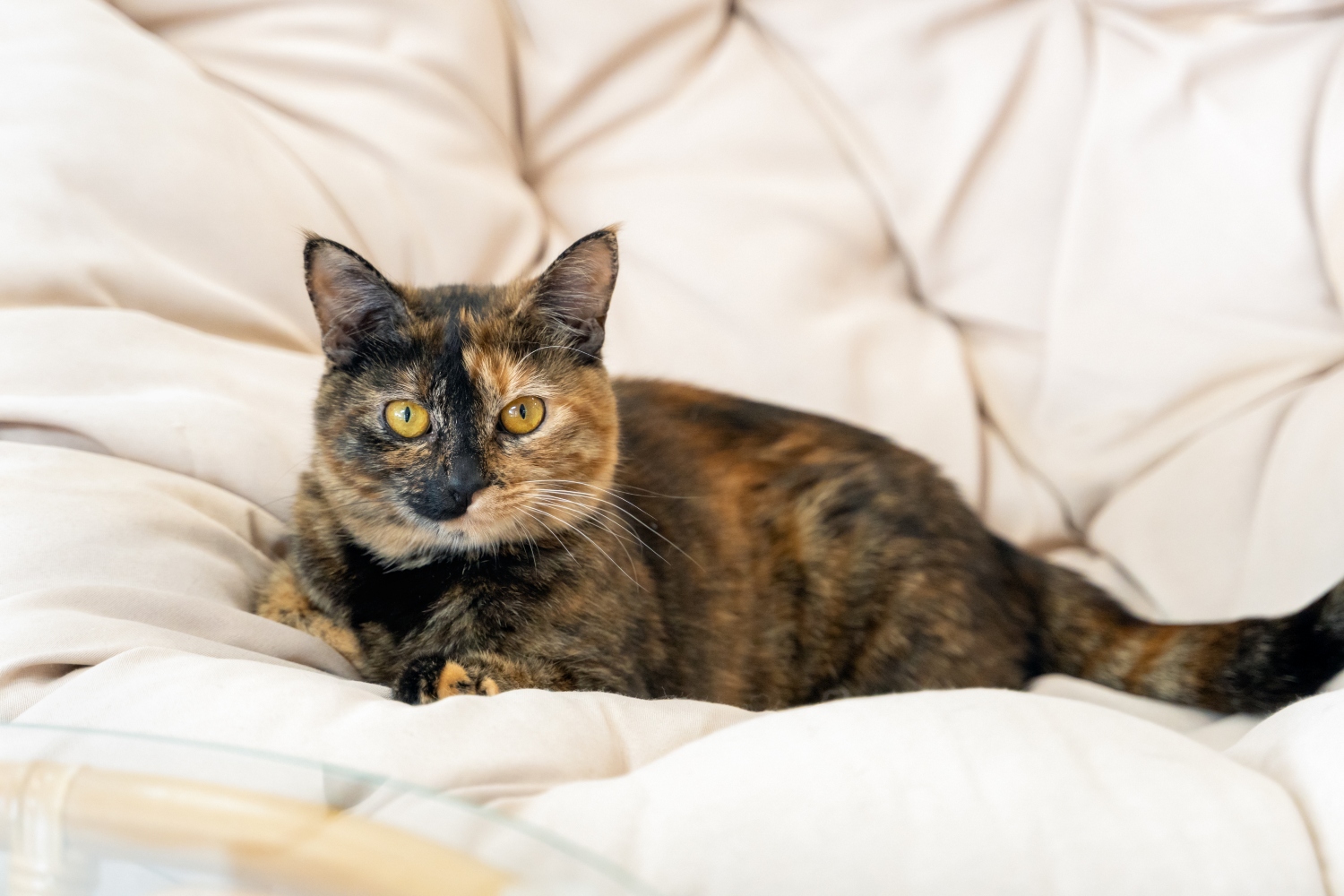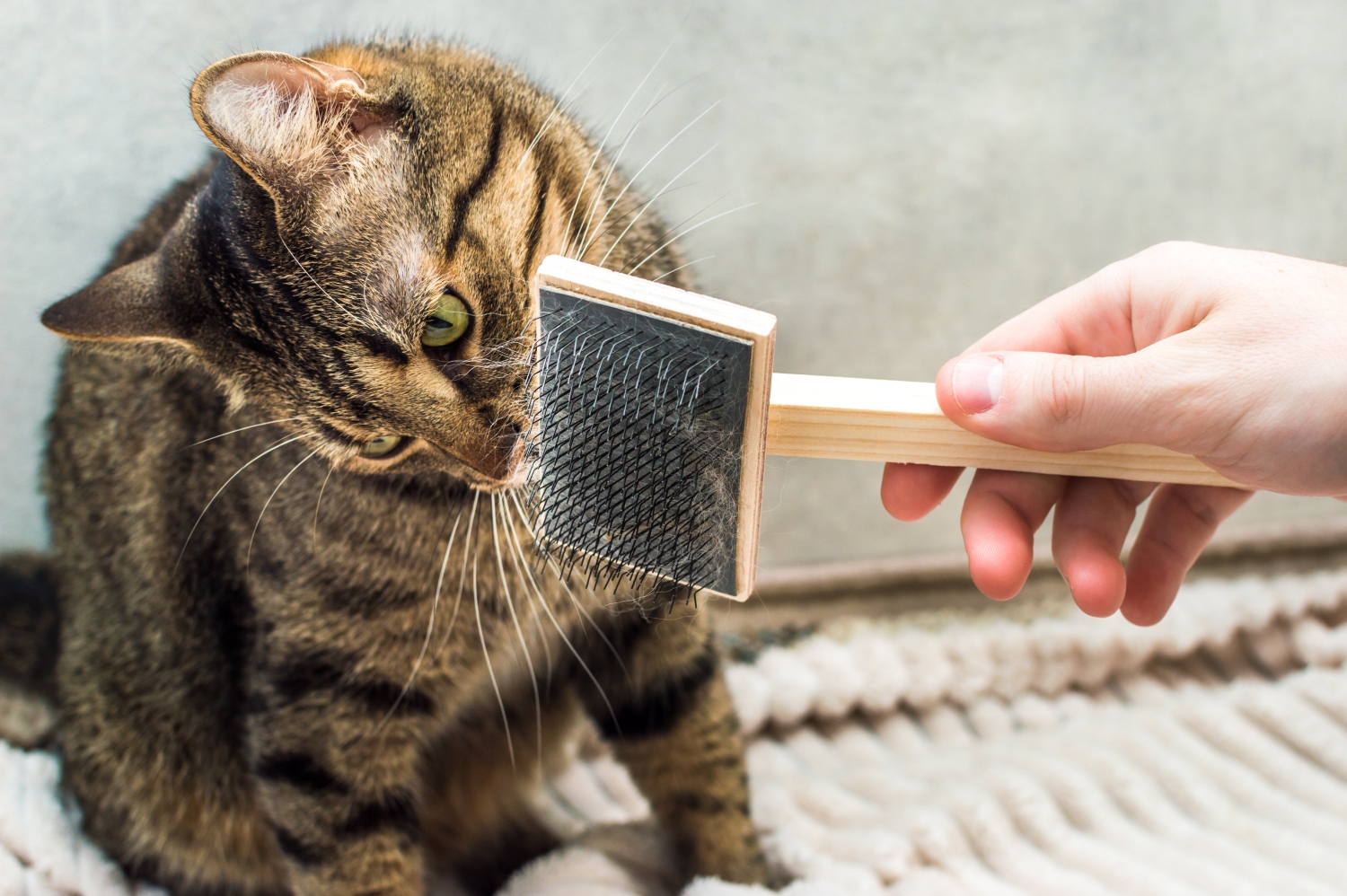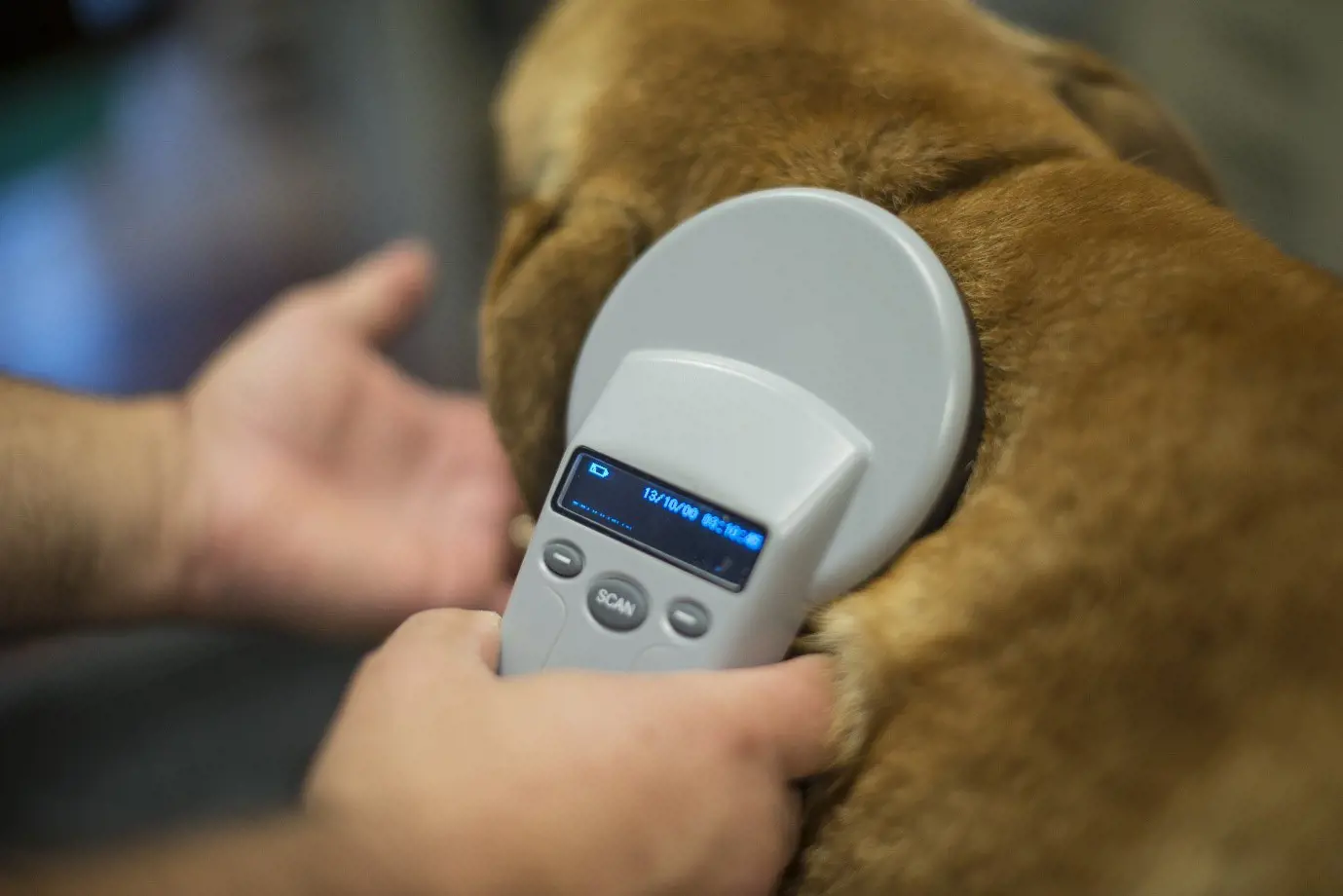Cat winter coat vs summer coat: what is the difference?
17th February, 2023

Love cats but hate cat hair? We hear you! Put down the lint roller and check out these top tips for keeping those pesky hairs out of your house and under control.
Picture the scene. You’ve vacuumed the whole house. You’ve taken the lint roller to every piece of clothing you own. At last, your house is cat hair free, right? Think again!
Your cat doesn’t stand a chance of hiding where it’s been. Just look for the trail of fur leading to the fluffy patch on the sofa.
Yes, it can be a little frustrating sometimes and feel like you’re forever cleaning up after your feisty feline, but they can’t help it!
It’s completely natural for your precious puss to shed their hair, especially during the warmer months. And every cat wants to look their best and prance with pride, right? So that grooming isn’t going to stop any time soon.
So, instead of going red in the face every time you see stray hairs, why not help your pet with some grooming? You might be able to limit the amount of cleaning up for you, too.
Below, we share everything there is to know about your moggy’s moulting and how you can help them keep their coat in tip-top condition.
Worried your cat is shedding faster or more than usual? When you insure a pet through Purely Pets you can get answers fast!
Is a cat’s coat different in winter and summer?
Yes! Just like we layer up or down depending on the seasons, so does your cat. Noticed the difference between its summer and winter dress? Let’s take a closer look.
All your cat wants for Christmas is a nice fur coat. The best bit? You don’t even need to do the shopping – they grow it themselves!
At this time of year, you might notice your feline looking a little rounder, but it’s not due to the extra treats it’s been scoffing – unlike us!
As the days get shorter and the cold sets in, your clever kitty will start to grow more fur to keep them warm and snug through those chilly autumn and winter months. They feel the cold, too, you know.
Expect your pet to look fluffy and for its coat to be a little longer and shaggier than it is in summer. How thick it gets will depend on:
- The breed
- The climate where you live
- The temperature in your home
Need some tips for keeping your moggy safe through the winter? We’ve got help elsewhere on our site!
Once spring rolls around, have your vacuum cleaner at the ready – it’s shed o’clock! Over the next few weeks, your cat’s coat will thin out and become shorter, ready for the heat.
Don’t be surprised if you spot your kitty trying to speed the process along. Felines like to get stuck into grooming this time of year, licking their coat with their rough-surfaced tongues, which helps remove any stubborn fur that's sticking around.
Worried your puss might be shedding a little too much hair? Get them to the vet. It could be a sign of an underlying health concern that needs sorting.
Speaking of vet visits – don’t forget to insure a pet from the moment you bring them home! Unexpected medical care and appointments can soon add up, but you can get help with the financial side of things when you have a pet insurance policy in place.
What types of cat coats are there?
Cat fur is just that, right? Fur? Well, yes, it is, but there are various types of coats in a range of gorgeous tones and patterns, which make your mischievous moggy beautifully unique.
How is your cat’s fur determined? Sit tight. It’s time for a little history lesson…
All domestic cats come from the same ancestor – the African wildcat. This feral feline has been around for thousands of years, and they all look pretty much the same. They have no need to change their coat colour and use their fur to blend in and hide from predators.
Cats lived alongside humans like this for thousands of years, and it was only in the last 200 years or so that they started to develop blotched and striped markings. Some also grew longer hair when exposed to colder climates.
Since then, feline fans started selecting their favourite patterns and traits, creating lots of the breeds we know and adore today.
Remember; you’ll need to know your cat’s lineage when you insure a pet and take them to the vet. Some breeds come with predisposed health concerns that you’ll need to keep an eye on.
Think you know all the patterns that exist amongst our moggy friends? Here they are!
Tortoiseshell
No, your cat hasn’t swapped its coat for a shell! This is the name of one of the most distinguishable patterns of feline fur and is a beautiful mixture of black and orange patches with some gold and brown specks blended in.
As if that wasn’t colourful enough, diluted tortoiseshells can come in blue and cream, too. Each pattern is unique, just like our fingerprints, and there may even be the odd surprise colour added into the mix.
Did you know that tortoiseshell kitties are nearly always female? It’s incredibly rare to spot a male with this coat!
Tabby

The most popular type of cat coat in the UK is the tabby. How can you identify one? Look for stripes across their body – the reason they are sometimes called ‘tiger’ cats – or spots on their chest.
These cute kitties often have a blob of white or two somewhere, too, like socks, the tip of their tail, or a bib on their chest. Adorable!
Tabbies tend to have an M (for mischievous, perhaps?) on their forehead and lines across their faces. They don’t just come in one variation either. You’ll find tabbies that are brown, grey, or orange and with various patterns:
- Patched
- Spotted
- Mackerel
- Ticked
You can even find a gorgeous combo of a tabby and tortoiseshell called a ‘torbie’!
Bicolour
You’ve guessed it – bicolour moggies are made up of two colours, which are usually white and something else. There are lots of variations of this pattern and it’s more common in mixed breeds.
Tricolour of Calico
This pattern is very similar to tortoiseshells but is usually made up of black, white, and orange. It’s also a lot more common in females and is sometimes known as tortoiseshell-and-white.
Colourpoint
Cats with this coat boast a stunning combo of light fur on their body and much darker shades on their face, feet, and tail. You’ll usually find them in beige or light brown with black features – think Siamese or ragdoll breeds. Cute, right?
If you own one of these beautiful kitties, you might notice their coat darkens as they age. Don’t worry! This is completely natural. That’s not to say you shouldn’t be keeping an eye on your senior pet’s health, though!
If your ageing moggy is showing signs of illness or distress, give your vet a call. If you insure a pet with Purely Pets, you can use our 24/7 vet video consultation service to get quick advice.
Solid
Any ideas what this pattern might look like? Spot on! It’s just one big block of colour with no patterns or markings whatsoever. If your kitty has a pair of socks or even the slightest change in shade on its tail, it’s not solid.
You’ll usually find these felines in black, white, or grey – if yours is any other colour, it’s incredibly rare!
Why do cats shed fur?
We’ve already mentioned that felines like to lose a layer or two to keep cool in the summer, but that’s not the only reason.
As your cat’s hair falls out, new, healthy fur will grow back in its place, which helps to keep their coat looking gorgeously thick and shiny. It can also prevent tangling and matting in old hair, which is particularly helpful for long-haired breeds.
10 tips for ridding your home of cat hair
As a cat carer, you understand that shedding fur is just part and parcel of owning a feline friend, but it doesn’t stop you from getting a little irked when your home gets covered in a lovely layer of the stuff!
But what can you do about it? If it seems like your cleaning efforts are never-ending, we’ve got some helpful tips that might make a difference:
- Get the vacuum cleaner out at least every other day. Vacuum in various directions to make sure you catch even the most stubborn hairs. Haven’t got the time? Let a robot vacuum do the hard work while you’re out.
- Got a pumice stone lying around? Hear us out. Rubbing it slowly over carpet can help gather up all those invisible hairs that would otherwise be left to build up.
- Use microfiber dry mops on laminate, hardwood, and vinyl to trap runaway fur which often flies about as you sweep.
- Keep a set of washing up gloves as your ‘cat cleaning pair’ for furniture and upholstery. You only need to slightly wet your gloves and run your hands over the surface. Rinse and repeat!
- Dust smooth surfaces to pick up flyaway hairs from behind the TV, on the mantelpiece, and anywhere else they seem to be hiding!
- To prevent your cat’s coat from sticking to everything in sight, try an anti-static spray on your furniture. Mixing fabric softener with water also works wonders and smells sweet, too.
- Use a lint roller on your clothes. Most pet owners have them lying around, but if you don’t, grab a strip of sticky tape and get cracking – this works just as well.
- To keep as much hair off your sofas and bed as possible, pop pet blankets on your moggy’s favourite spots and give them a wash every week.
- Tumble dry before you wash! Yes, you heard us right. This trick works wonders for loosening hairs. Simply chuck your hairy items in with a fabric softener sheet or dryer ball and pop it on for 10 minutes. Voila!
- When using your washing machine, you can add half a cup of white vinegar to really help shake all the hair loose. Just be sure to scrape out the hair ball before throwing your own load in or you could end up wearing it all!
Do you need to groom your cat?
Cats clean themselves, don’t they? Yes, and we’ve mentioned how they also groom to help with shedding, but that doesn’t mean they don’t appreciate a helping hand now and again.
What’s more, grooming is a wonderful way to bond with your faithful feline and spot any potential health concerns early on. It doesn’t stop with hair brushing either. Your cat needs the occasional bath, nail trim, and teeth clean!
If you have a particularly grumpy moggy, this might seem a little intimidating, but don’t be afraid to take them to a pro.
When you insure a pet, it’s also worth considering a pet health plan to help spread the cost of non-emergency care, like grooming. Speak with your vet to see if they can come up with a plan for your pet to keep them looking fabulously furry!
How to brush your cat’s coat properly
If you simply grab a brush and start combing your cat’s fur, it’s likely not going to go down very well! To avoid your beloved cat scarpering and leaving a trail of hair everywhere, we’ve got you covered:
- Start young: This is the best way to get your little kitty used to regular grooming.
- Take it slow: There’s no need to brush your whole cat at once. Do the back in the morning and the legs at night to avoid stressing them out.
- Find the right brush: Speak to your vet about the best comb for your cat’s fur so you don’t hurt it. Do you insure a pet with Purely Pets? Contact our 24-hour vet video service to ask about what’s right for your cat.
- Pick the best time: Only start grooming when your cat is calm and relaxed or you might be in for a nip or scratch!
- Provide plenty of treats: Your feline friend should enjoy being brushed, so be sure to provide plenty of cuddles and their favourite treats for being good.
We’ve got plenty more moggy maintenance tips where that came from in our guide on how to groom your cat properly.
Best cat grooming products
Grooming is vital to a healthy cat, so it’s important you stay on top of your kitty care routine.
Luckily, products exist that make the job a little easier on all you pet parents out there, so prepare to pamper your cat in style with these feline spa essentials.
Aumuca Cat Brush (£18.99)
Picking all that cat hair out of a brush can be super fiddly, can’t it? With this brush, simply click the button on the front and the fur will get released into the bin! It works great on all coat types and is soft on their skin, too.
Furbliss Hygienic Pet Wipes (£15.99)
Not got time to stick moggy in the tub today? These easy-to-use wipes get rid of bad smells and keep your pet clean and fresh between washes.
Thunderpaws Pet Dematting Rake (£9.99)
This is a life saver for all those long-haired kitty owners out there! The claws cut through matts and tangles rather than pulling them out and causing your cat all sorts of pain. This is perfect for thinning and deshedding in the spring, too.
Pat Your Pet Grooming Glove Set (£11.99)
If you’ve got a cat that’s scared of the brush, you might find grooming easier with these nifty gloves. Gently massage and stroke your pet while removing loose hairs. Your feline will feel wonderfully relaxed and end up looking just purrrfect!
Mikki Cat and Kitten Shampoo (£3.99)
Does your cat enjoy you lathering on the shampoo and the gentle massaging motion, but soon legs it when it’s time to rinse? This quality budget shampoo requires less rinsing than most, so your cat can get back to sunbathing by the window as soon as possible.
Vet's Best Waterless Cat Bath (£8.00)
Want to avoid water altogether when it comes to baths? This shampoo for sensitive skin has a special leave-in formula to leave your cute cat fresh and dandruff free without getting even their paws wet.
PetSol Dental Care Kit (£12.99)
Did you know that dental disease is one of the most common cat health concerns? You can help lower their risk of suffering by staying on top of their oral hygiene, and this kit can help, complete with different brushes and toothpaste.
Need some dental care tips? We’ve got plenty in this guide to looking after your cat’s teeth.
Is shedding ever a concern?
Shedding is completely natural and is very beneficial to your moggy. Cats Protection says the only time you need to worry is if they’re losing their fur but none is growing back in its place.
But what does this mean? Bald patches could hint at a number of underlying skin issues or that they are over-grooming – a common sign of stress.
No pet parent wants to think about their cat feeling anxious or suffering from a skin problem, which is why it’s so important to insure a pet through every stage of its life.
While you might think a healthy, young cat won’t run into trouble, you can never really tell when an accident or sudden illness will occur.
With pet insurance, you know your feisty feline can get emergency care when they need it.
Pet insurance for your furry feline

Your cat is a reflection of you - so if its coat is looking a little worse for wear, you might want to step in and give it a helping hand.
But how do you manage things when your moggy needs urgent care and you’re faced with a pile of unexpected vet bills? Pet insurance!
When you insure a pet through Purely Pets, we help you protect them in times of need and make sure they get the right treatment to spring back on their feet.
We’ve got your cute kitten covered from as young as 8 weeks old and can protect even the greyest mogs in the neighbourhood with our no-upper-age-limit policies.
Don’t wait any longer to give your faithful feline the love and protection it deserves. Call Purely Pets to insure a pet today.
Helpful Pages
Recent Posts
Pet Insurance Quote
- 98% claims paid *
- Claims paid directly to vets
- 24/7 vet video consultations
- Interest free monthly payments




